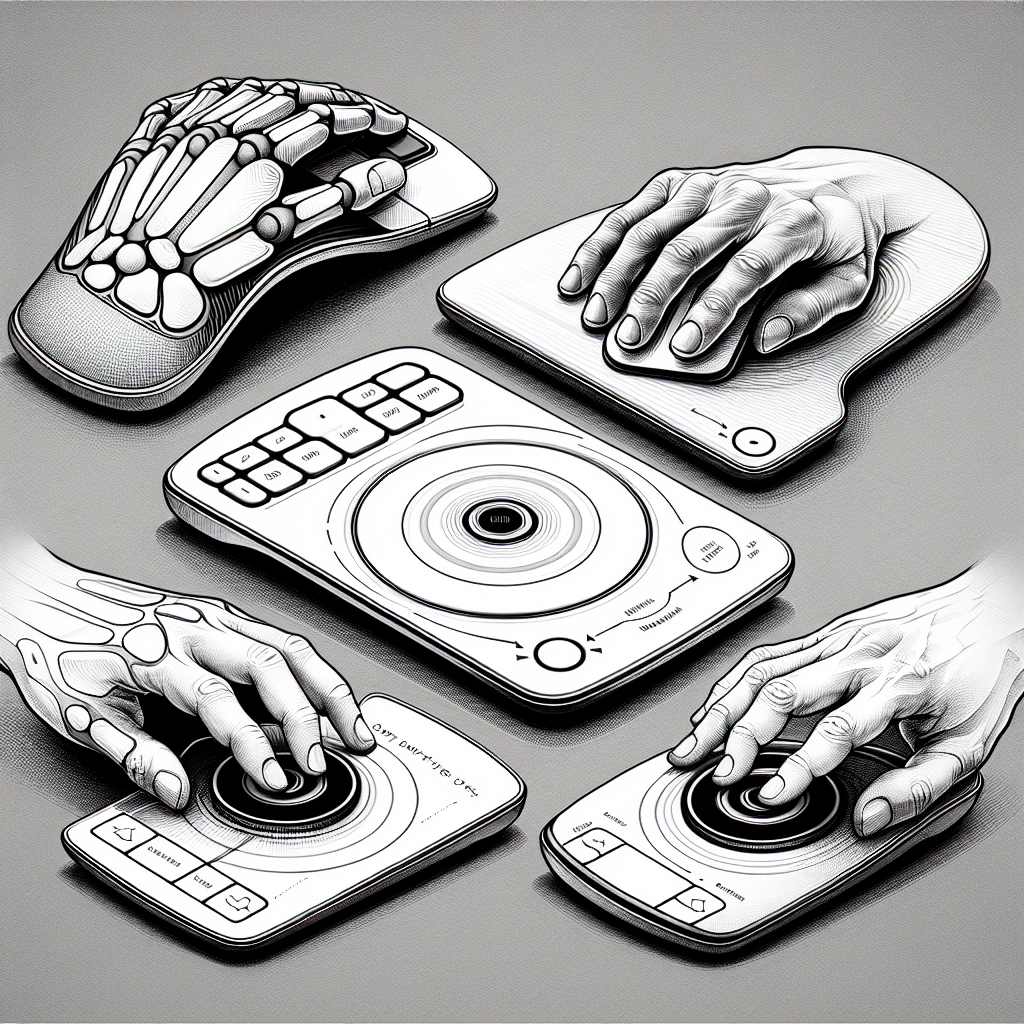Arthritis can significantly impact a person’s daily activities, including the use of technology such as trackpads. For those experiencing joint pain, stiffness, and decreased hand mobility, traditional trackpads can be challenging to use. Fortunately, advancements in ergonomic design have led to the development of specific wireless trackpads that cater to the needs of individuals with arthritis. In this article, we will explore various designs, features, and technologies that make trackpads more accessible and comfortable for arthritis sufferers.
| Trackpad Feature | Description | Benefits for Arthritis Users |
|---|---|---|
| Ergonomic Shape | Curved or contoured designs that fit the natural hand position. | Reduces strain on hands and wrists, promoting comfort during use. |
| Larger Surface Area | Expanded trackpad size for easier finger navigation. | Allows for less precise movements, minimizing finger strain. |
| Soft Touch Materials | Utilization of soft, cushioned materials. | Provides comfort and reduces pressure on sensitive joints. |
| Adjustable Sensitivity | Settings that allow users to adjust responsiveness. | Presents control options that can accommodate varying levels of dexterity. |
| Touch Zones | Identifiable sections for quick access to different commands. | Fosters easy navigation without the need for finger lifting. |
The Importance of Ergonomic Design
Ergonomic design is crucial for individuals with arthritis as it focuses on minimizing discomfort while maximizing efficiency during use. The following are key aspects of ergonomic design that particularly aid arthritis sufferers:
- User-Friendly Interface: A straightforward and intuitive user interface helps eliminate confusion, making the trackpad accessible for people with cognitive challenges as well.
- Variable Height Options: Some trackpads offer adjustable height options that can be customized to meet individual users’ needs, preventing awkward wrist angles.
- Grip-Friendly Features: Textured or rubberized surfaces provide better grip, making it easier for users to navigate without excessive effort.
Types of Wireless Trackpads for Individuals with Arthritis
Various wireless trackpads have specific features designed to assist individuals with arthritis. Here are some popular options:
1. Contoured Trackpads
Contoured trackpads are designed to fit the natural shape of the hand. They often include a supportive wrist rest that minimizes wrist strain. These trackpads allow for easier scrolling and navigation, making them a favored choice for users with joint pain.
2. Trackpads with Adjustable Sensitivity
Some wireless trackpads come equipped with adjustable sensitivity settings. This feature allows users to tweak how responsive the trackpad is, making it more straightforward for those with reduced dexterity to control their movements accurately.
3. Touchscreen Trackpads
Touchscreen trackpads offer a different approach by allowing users to tap and swipe directly on a screen. These devices can be easier to operate for those who find traditional mouse movements difficult. They can also reduce the need for complex finger movements, further alleviating strain.
4. Trackpads with Large Surface Areas
Trackpads with large surface areas provide ample space for finger movement. This design reduces the precision needed to control the trackpad, thereby making it easier for users with arthritis.
Key Considerations When Choosing a Trackpad
When selecting a wireless trackpad for arthritis, it’s essential to consider the following factors:
- Size: A larger trackpad may make navigation easier.
- Adjustability: Look for models that allow customization in height, sensitivity, and angles.
- Material: Soft and grip-friendly materials can significantly improve user experience.
- Support: A built-in wrist rest can help further support the wrist, reducing overall strain.
Additional Features to Look For
Beyond the standard operational features, consider looking for additional functionalities that may benefit arthritis users:
- Programmable Buttons: These allow for quick access to frequently used commands, minimizing repetitive strain.
- Bluetooth Connectivity: Wireless options eliminate cord management concerns and allow for flexible work environments.
- Multi-Touch Gestures: Support for gestures can reduce the number of clicks needed, enhancing usability.
How Varying Types of Arthritis Affect Technology Use
Different types of arthritis can influence the way an individual interacts with technology. Understanding these differences might help tailor selections even further:
- Osteoarthritis: Characterized by the degeneration of cartilage, users might experience pain and stiffness in their fingers and joints.
- Rheumatoid Arthritis: An autoimmune condition that can lead to inflammation, swelling, and pain, making delicate finger movements even more difficult.
- Psoriatic Arthritis: Similar to rheumatoid arthritis but can also involve skin symptoms, affecting hand dexterity.
Tips for Using Trackpads with Arthritis
Here are some practical tips for arthritis users to maximize comfort when using a trackpad:
- Positioning: Ensure the trackpad is at a comfortable height to reduce wrist strain.
- Resting Periods: Take regular breaks to avoid excessive fatigue.
- Gentle Movements: Use gentle, fluid movements rather than quick, jerky motions.
- Utilizing Accessories: Consider wrist supports and padded rests for added comfort during extended use.
Conclusion
Trackpads specifically designed for individuals with arthritis are an essential tool for enhancing usability and comfort during computer interaction. By focusing on ergonomic features, adjustable settings, and user-friendly designs, these devices can significantly reduce the discomfort experienced by those with joint pain. As technology continues to evolve, it will become increasingly important to prioritize accessibility and support for all users, especially those with physical challenges.

